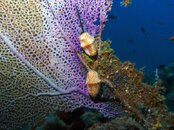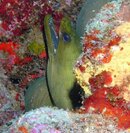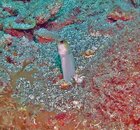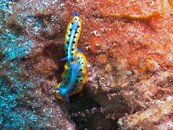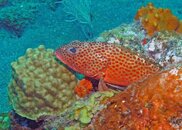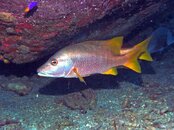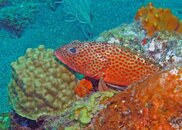Flareside, can I ask you why you recommended the Sea & Sea YS-01 strobe?
After you've spent a little time on these boards, you will understand how dangerous a question like this is. While I could rattle off comments like reliability, power, good reputation, resale value, yada, yada, yada... (all of which do actually favor the YS-01) the reality is that when it comes to strobes it all comes down to personal opinion, likes and dislikes. And since you asked, I will answer (but for those who don't agree with my opinion, please have the decency to debate it rather than attacking it.)
Based on your situation, there are two specific strobes that I would recommend. The YS-01 is one of them and the Inon S2000 is the other. These two strobes represent the bottom end of what I (opinion) consider "real" strobes. These are the strobes that you will
never regret buying. These are the strobes you never hear any complaints about. These are the kind of strobes you will keep as your system grows, either buying a twin for the other side or moving it over to the fill position if you get something stronger. Anything less (again, this is only an opinion) is a toy that you will ultimately wind up discarding and replacing due to it being underpowered or unreliable. You asked specifically about the AF35. It has a guide number of 9 where as the YS-01 has a guide number of 20 so you would need 2 of the AF35s to get the same punch as the YS-01.
Regarding the housings, the Ikelite housing is superior in practically every way. More reliable, more durable, repairable. (Canon housings are actually considered by Canon to be disposable should they break.) And if you feel you will eventually get into external mount lenses, the price difference between the Ikelite and Canon housings disappears as you have to buy a $100 mounting bracket to get lenses to fit the Canon housing whereas the Ikelite already has the mount built in. That being said, I still buy Canon housings. If you are not a hard core user you will likely never wear them out and they are smaller, more ergonomic and easier to pack.
And finally, is raw really worth it? The first time you go into a RAW photo in Lightroom or Canon DPP to correct the white balance and you click on a black spot somewhere in the photo and the software instantly puts all the colors straight, you will be hooked. The first time you brighten up and bring out the color in an underexposed image with a few simple clicks, you will be hooked. While you can with a fair amount of effort massage and manipulate jpegs to where they somewhat acceptable, you can actually
fix RAW files to a reasonable extent and do it fairly easily.
PS, budget for a copy of Adobe Lightroom 3. Lightroom 4 is about to come out so Lightroom 3 should be on the clearance tables soon, probably somewhere in the $149-$179 range. If you aren't already signed up for the Newegg.com email specials, do so.



